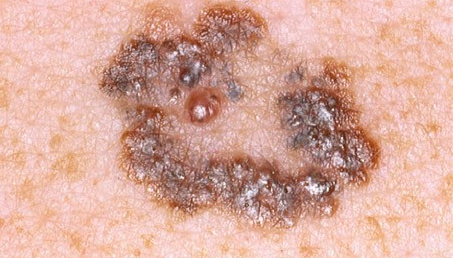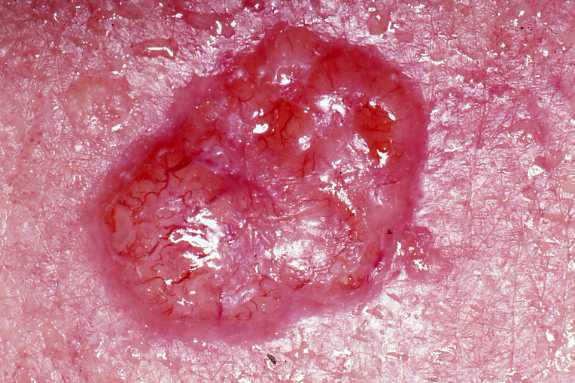WBR0801
Jump to navigation
Jump to search
| Author | [[PageAuthor::Gonzalo A. Romero, M.D. [1]]] |
|---|---|
| Exam Type | ExamType::USMLE Step 2 CK |
| Main Category | MainCategory::Surgery |
| Sub Category | SubCategory::Dermatology, SubCategory::Dermatology |
| Prompt | [[Prompt::A 68-year-old man comes to the clinic complaining of an ulcer on his face. He has been a sailor for his entire life. He states that he does not feel any pain. The patient states that it has been growing slowly over the past 9 months. On physical exam it is clean looking, has 2 cm in diameter and is located on the lower lip. There are no lymphadenopathies in the head or neck. What is the most likely diagnosis?]] |
| Answer A | AnswerA::Melanoma |
| Answer A Explanation | [[AnswerAExp::Incorrect. Melanoma is a type of skin cancer that arises from melanocytes presenting with a hyper pigmented lesion, irregular borders and several colors within the lesion. It has a great risk of metastases.
 |
| Answer B | AnswerB::Squamous cell carcinoma |
| Answer B Explanation | [[AnswerBExp::Correct. See overall explanation]] |
| Answer C | AnswerC::Basal cell carcinoma |
| Answer C Explanation | [[AnswerCExp::Incorrect. Basal cell carcinoma Basal cell carcinoma (BCC) is the most common form of skin cancer. As shown in the picture it presentes as a raised lesion, erythematous, shiny, with telangiectasias that can erode and bleed.
 |
| Answer D | AnswerD::Actinic keratosis |
| Answer D Explanation | [[AnswerDExp::Incorrect. Actinic keratosis is a premalignant condition of thick, scaly, or crusty patches of skin. It is most common in fair-skinned people who are frequently exposed to the sun, because their pigment isn't very protective. It usually is accompanied by solar damage. Since some of these pre-cancers progress to squamous cell carcinoma, they should be treated.
 |
| Answer E | AnswerE::Leishmaniasis cutanea |
| Answer E Explanation | [[AnswerEExp::Incorrect. Leishmaniasis cutanea There are several cutaneous manifestations of leishmaniasis, a parasitic infection. The most common form which causes a sore at the bite site heals in a few months to a year, leaving an unpleasant looking scar. This form can progress to any of the other three forms. Diffuse cutaneous leishmaniasis produces widespread skin lesions which resemble leprosy and is particularly difficult to treat. Mucocutaneous leishmaniasis commences with skin ulcers which spread causing tissue damage to (particularly) nose and mouth
 |
| Right Answer | RightAnswer::B |
| Explanation | [[Explanation::Squamous cell carcinoma arises from the epithelial layers of skin and it grows slowly. If neglected and once it reaches the size of 2 cm and more it is three times more likely to spread to other areas than the smaller lesions. Usual size ranges from 1 cm to 5 cm. It is the mechanical interference of this fungiform exophytic lesion that brings it to the notice of the patient or the clinician. The tumor is usually located in the lower half of the face, although it can also be present in the anogenital region, within a scar or chronic wound. It can ulcerate forming abscesses or cellulitis.
Risk factors include: injured or inflamed skin, sun exposure (i.e. sailing), fair complexion, arsenic, radiation, and Xeroderma Pigmentosa.
Histologically is seen as concentric neoplastic cells arising from the epithelial surface with malignant features which produce keratin pearls in the center. This lesion has a cure rate of 95% - 98% and a 3 year disease specific survival rate of 85%.
Educational Objective: |
| Approved | Approved::No |
| Keyword | WBRKeyword::Squamous cell carcinoma, WBRKeyword::skin cancer, WBRKeyword::Basal cell carcinoma, WBRKeyword::skin pathology |
| Linked Question | Linked:: |
| Order in Linked Questions | LinkedOrder:: |